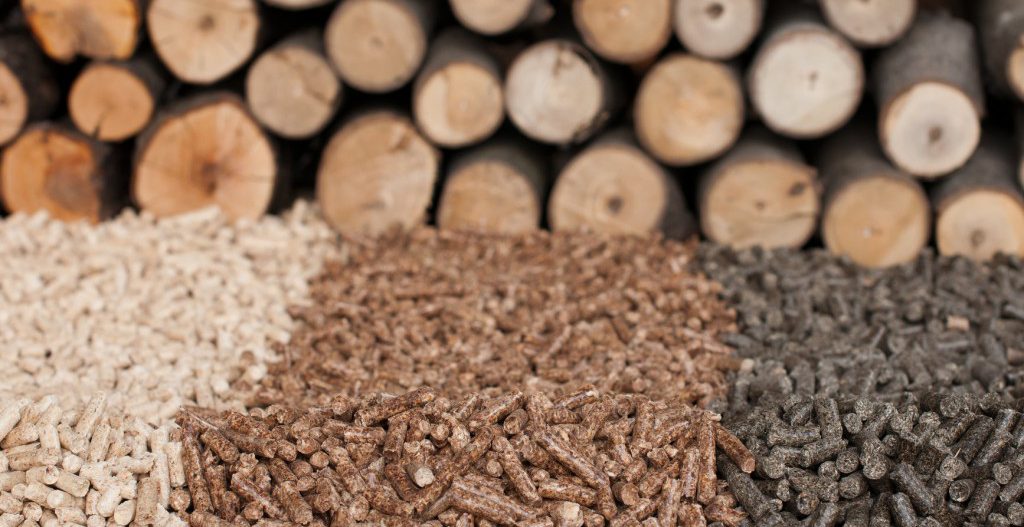
As the U.S. and other countries have ramped up development of bio-energy as an alternative to fossil fuels, demand is rising for trees for wood pellets, or biomass, and agricultural products for liquefied biofuels.
A recent multi-year study by researchers at North Carolina State University and the U.S. Geological Survey, detailed in two papers printed in August in the journal “Global Change Biology Bioenergy,” indicates that the increased demand could come with a cost: a loss of forested land, especially mature pinelands, and because of that, less habitat for wildlife.
Supporter Spotlight

Nathan Tarr, one of the researchers and a co-author of one of the papers, “Projected Gains and Losses of Wildlife Habitat From Bioenergy-induced Landscape Change,” said the team didn’t go into the study with a preconceived notion of what they’d find, but like most scientists, they had a suspicion.
“We wanted to better understand the potential impacts of bio-energy demand in North Carolina and the southeastern U.S.,” he said. “It really hadn’t been done before.”
Tarr, who is a research associate in the Biodiversity and Spatial Information Center, North Carolina Cooperative Fish and Wildlife Research Unit, at NCSU, said that as a scientist, he didn’t want to draw any conclusions about whether the study should have implications on development of biofuel resources in North Carolina; those decisions are for policy-makers and resource managers, he said. But the work by the research team “clearly points out that as demand for the resources increases, there are trade-offs to consider,” he said.
And those trade-offs are important not only for the forests in the state and the region, but also for the economy. Enviva Holdings is building a wood pellet export facility at the Port of Wilmington, which has been estimated by state officials to have a potential for $1.25 million in annual revenue.
When it becomes operational, according to reports, the Wilmington terminal is expected to sustain up to 70 jobs, and to add about $16.9 million annually to the local economy and pay annual state and local taxes of about $425,000.
Supporter Spotlight

Enviva is a Maryland-based manufacturer and supplier of wood pellets to buyers in the United Kingdom and the entire European Union. It currently operates two wood pellet mills in North Carolina — one in Ahoskie, and one in Northampton.
And with U.S. production of wood pellets expected to increase from 3 million tons annually a few years ago to more than 10 million annually in the near future, North Carolina’s vast pine forests figure to make it an even bigger player in the industry.
In their study, the researchers, led by Robert Abt of the NCSU Department of Forestry and Natural Resources, simulated landscape changes from 2010 to 2050 under five scenarios of woody biomass production for wood pellets and liquid biofuels in North Carolina.
Scenarios included harvest of natural and planted forests and planted woody crops grown on marginally productive forestland.
Generally, the work concluded that meeting demand for biomass from conventional forests resulted in more total forestland compared with a baseline, business-as-usual scenario.
“However,” the report writers added, “the remaining forest was composed of more intensively managed forest and less of the bottomland hardwood and longleaf pine habitats that support biodiversity.”

The results show that the regions most likely to be affected by bio-energy production are also critical for biodiversity, a challenge in terms of sustainability.
Tarr said there were four more specific conclusions:
- Species that inhabit newly regenerating forests may benefit from bio-energy demand.
- Species that rely on a single, mature type of habitat – such as bottomland hardwood forests – are at risk if that type of habitat is harvested for bio-energy.
- Bio-energy demand could exacerbate habitat loss for species that are losing habitat to urbanization.
- Species with small ranges deserve special consideration because they can be more sensitive to landscape changes related to bio-energy harvesting.
What it all points out, Tarr said, is that future of bio-energy development and production in the region comes with trade-offs that are often complex.
“None of the biomass sources that we looked at were good or bad for all species, nor was a single mix of biomass sources consistently the best or worst for all species,” Tarr said.

The models showed that increasing the amount of forests harvested in the state resulted in projected losses of habitat for the prothonotary warbler, a tiny bird beloved by birders, but harvesting forests increased habitat for the yellow-breasted chat. The warbler likes mature forests; the chat likes regenerating ones.
According to the researchers, “The area of forest in the region was relatively stable through much of the 20th century, because the amount of forest converted to urban land uses over time was offset by reforestation of agricultural land. In recent years, the reforestation of agricultural land in the region has lessened, and the net result has been the loss of forestland over time.”
The region was recently designated a global biodiversity hot spot, and according to one of the papers, the use of biomass for energy hinges on its sustainability. Minimizing overall loss of forests and biodiversity and maximizing the area of habitat have been suggested as criteria for sustainable bio-energy production.
“Results from the scenarios we examined suggest that simultaneously achieving the best outcomes for these sustainability criteria under a single biomass production future may not be possible,” according to the report.
However, there may be a middle ground. To avoid the negative effects on critical habitats, restrictions on biomass harvesting in longleaf pine and bottomland hardwoods will be necessary.
Jennifer Costanza is lead author of one of the papers on the work, “Bioenergy Production and Forest Landscape Change in the Southeastern United States.” She stressed the potential the study cites for replacement of natural forests with “managed” ones that don’t provide the same level of habitat for rare species. The endangered red-cockaded woodpecker, for instance, prefers old longleaf pine trees, generally at least 80 to 100 years old, over very open areas maintained by frequent fires.

“What we found is that we need to pay very close attention to the potential for the loss of natural habitat,” Costanza, a research assistant professor of forestry and environmental resources at NCSU, said in an interview. “And the greatest potential for loss is in the area with the greatest biodiversity.” In other words, planting forest to harvest for energy could result it more actual forested land, but less good habitat.
“If there is potential to threaten natural habitat, it should be avoided,” Costanza said, and production of biomass for energy purposes would be best concentrated in places that are already cut.
“This highlights the importance of setting priorities for wildlife conservation,” said Matt Rubino, co-author of “Projected Gains and Losses of Wildlife Habitat From Bioenergy-induced Landscape Change.”
Rubino, a research associate in the North Carolina Cooperative Fish and Wildlife Research Unit at NCSU, noted in an NCSU News story that, “Because any mix of biomass sources is likely to benefit some species and harm others, it is important to identify which species are priorities for conservation so that policies can be designed to minimize negative impacts on those species.”

Abt said he’s not particularly worried about how the wood pellet industry will affect forests on a regional scale, across the Southeastern U.S., because it’s less than one-tenth of the pulp-paper demand on the same general resource.
But, he added, “everything is local,” and if you live in the northeastern part of North Carolina, you might view the industry as a great thing if you are a forestland owner or if you think of it strictly in terms of job creation, but there’s a concern, on that local scale, about clear-cutting that might occur.”
Kent Jenkins Jr., vice president of communications for Enviva, said the company is committed to conservation and to alternative energy.
“Enviva has invested heavily in North Carolina because of its abundant, healthy and growing forest resources and its strong communities and great workforce,” he said.
Enviva, Jenkins said, is committed to the sustainability and growth of U.S. forests. He said independent scientists and policy-makers have concluded that wood pellet production does not pose a threat to forest health or harm biodiversity.

He noted a recent study by Chris Moorman, coordinator of the Fisheries, Wildlife, and Conservation Biology and also a forestry professor at NCSU, that found that wood pellet production does not harm biodiversity in Southern pine forests.
Moorman and his students looked at the wood biomass left over from logging operations and used to make wood pellets and found that removing it didn’t affect the populations of small animals, such as mice, toads and birds at clear-cut loblolly plantations.
However, Moorman has previously said clear-cut logging is known to affect biodiversity by displacing forest-dwellers such as deer and nesting birds.
Jenkins said Enviva takes steps to protect the forests and natural habitats where the company works.

“We produce wood pellets using wood that is left over from a traditional saw timber harvest that cannot be used for high-value products such as like furniture and lumber. We meet the standards of major forest sustainability organizations,” Jenkins said.
Enviva also has also developed sustainability initiatives that go beyond what the company is required to do.
The company does not accept wood from four environmentally sensitive forests that were independently identified by a number of academic and conservation organizations. The company has a “track and trace” system that identifies the source of every truckload of wood used.
Also, the Enviva Forest Conservation Fund, a 10-year, $5-million program, was set up to protect bottomland forests in the North Carolina-Virginia coastal plain.
In 2016, the company has awarded a total of $500,000 to four conservation organizations to assist in acquiring sensitive forestland.







